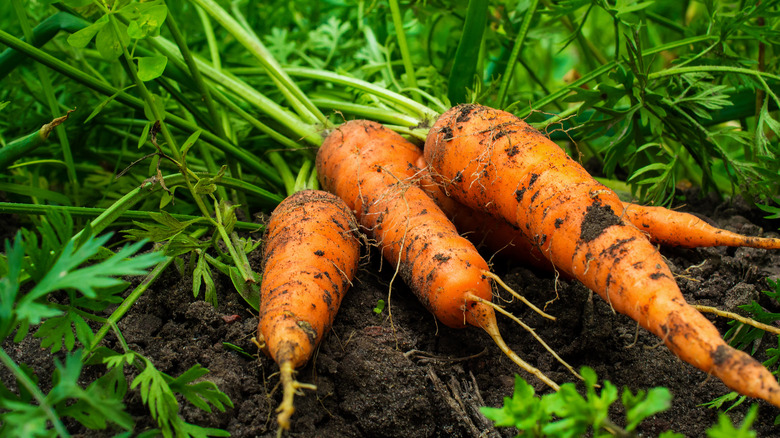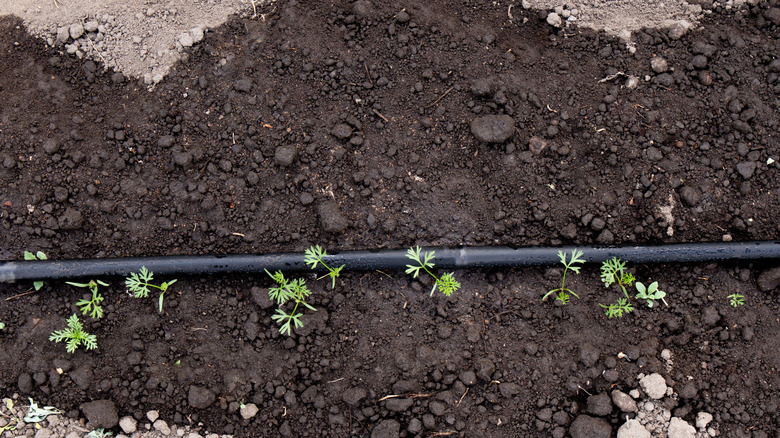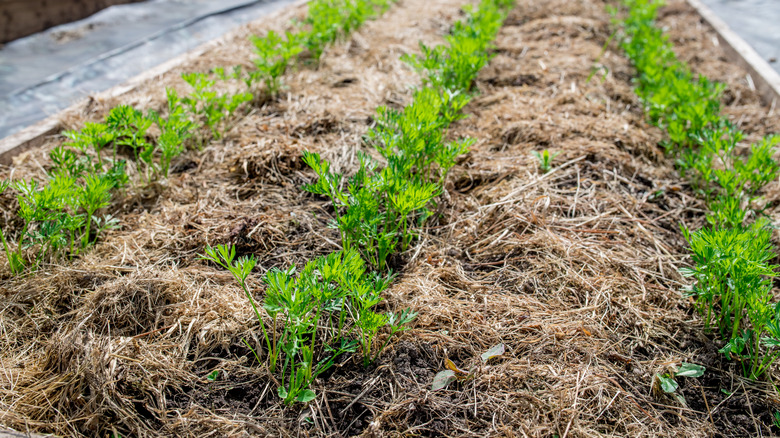Our Master Gardener's Advice For Growing Carrots In The Summer Heat
We may receive a commission on purchases made from links.
Carrots are generally considered a cool-season crop that needs warm soil for the best germination rates. This means fall is the ideal time to grow perfect carrots for a delicious harvest, but if you started your seeds in late spring, there are a few ways to help your carrots survive the heat of summer. Creating a cooler environment for your plants may help them get through a heatwave. Keeping the soil moist, adding shade cloth, and mulching might just keep your carrots growing through the summer heat.
Thinking ahead is always the best practice, so if you know you're going to be growing carrots in the summer, look for varieties that are more heat-tolerant, like 'Romance' from Johnny's Selected Seeds. If you're starting your seeds later in the growing season, a small, round Parisian market variety that matures quickly may be ideal. 'Romeo' carrots from Renee's Garden only take two months from planting to harvest. Plus, they're super cute and ideal for containers. Growing a short-season carrot might help you beat the heat before it arrives, but if your carrots are already in the soil, here are a few tips to help them stay alive.
Moisture is a must
First, I must tell you that there are some heat waves that a cool-season crop simply will not survive. If you are facing nighttime temps around 70 to 80 degrees Fahrenheit and hot days around 100 for a prolonged period, your plants may not make it — but it doesn't hurt to try. The key here is to keep soil temperatures as low as possible until cooler days return. Also, you may not see much, if any, growth on your carrots in the summer. Those root crops will likely go into survival mode until more favorable conditions arrive. Finally, if you are harvesting carrots in the heat of summer, you may notice they are more bitter due to a lower water content.
Consistently moist soil will certainly result in sweeter carrots and overall cooler soil temperature. A hose-end sprayer is sufficient to water carrots if that's all you have, but a drip line or tape is much more efficient. Drip irrigation is the best watering technique because it results in considerably less evaporation, as water is almost instantly absorbed into the soil. This process, combined with adding some physical barriers between the soil and the sun, can significantly lower the soil temperature around your carrots.
Keep cool and carrot on
Keeping your carrots well-watered is important to their health and your harvest, but if you combine that with other practices to cool the soil, you might just end up with plants that not only survive but continue to thrive. You can lower the temperature of your soil by adding a layer of shade cloth ($15 on Amazon) over your carrots. Of course, you don't want to block out all the sun, but adding 40% more shade using a garden cover can seriously reduce those UV rays that are heating up the soil.
It's also a good idea to consider a light layer of mulch to help hold in moisture and keep the sun from warming the ground. A thin layer of straw is the best type of mulch for this situation (not hay, which includes seeds you do not want sprouting in your garden). Just add a thin layer to the soil's surface to increase the efficiency of the water you use and keep the soil cool enough for your carrots to grow in the summer heat.


